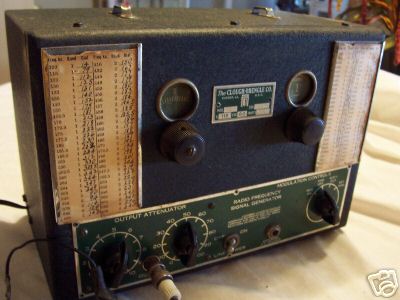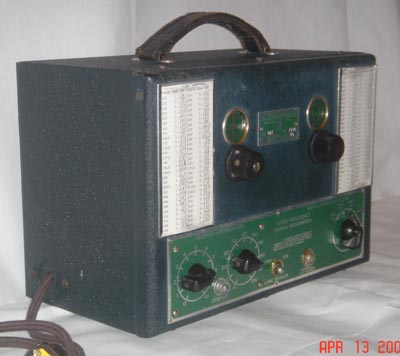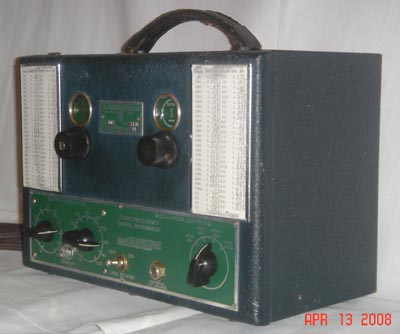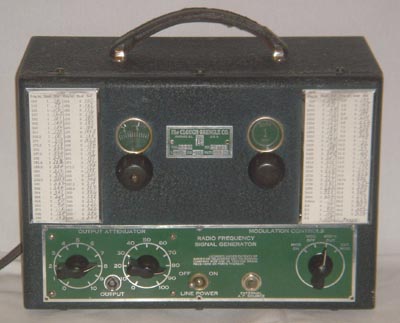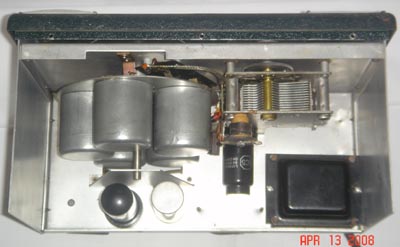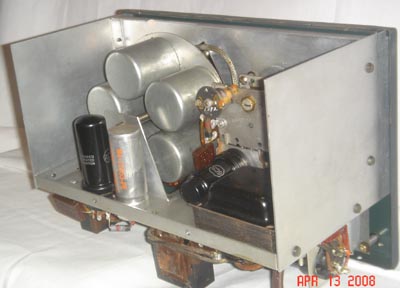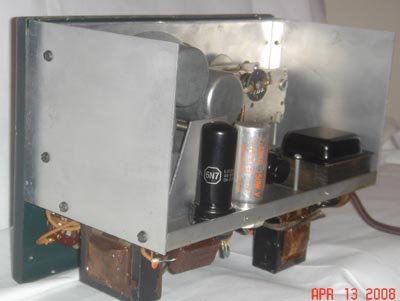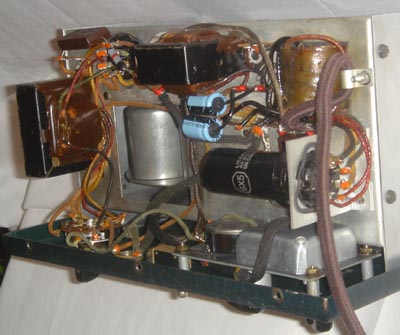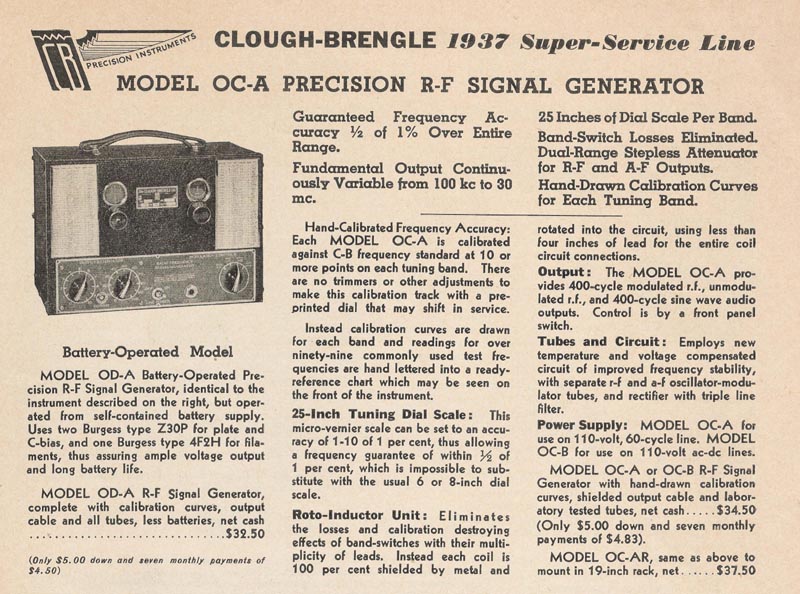This first photo is a copy of the unit when posted for sale on Ebay. It did not look too bad and, at $9.87 it was a good price if complete. Since I was the only bidder, I won the auction at the above price on November 29, 2007.
My intentions for purchasing the generator was to part it out for the components within, and finish refurbishment of an OCA purchased almost a year previously.
Upon receipt from shipping, a close examination revealed a unit that was in almost pristine condition internally. The intended recipient of the new generator's parts had at some point in it's distant past, totally burnt out
the power supply, a possible lightning strike doing the damage. Such was the damage that, the chassis where the transformer and rectifier tube were located, had been severely blackened with carbon. The owner at the time had completely removed all traces of the original supply, and had substituted with a modern transformer and silicon full-wave bridge rectifier and new filter capacitors. Although the repair was functionally correct, indeed the oscillator performed well, the appearance was far from original.
Since the more recently acquired OCA, hereinafter referred to by it's serial number of 2735, was in much better internal condition, I opted for swapping the roles of the two oscillators, and repair the new one. My order of battle when tackling any vintage electronic repair, is to first return the unit to as original condition as possible. In the case of 2735, that was rather easy to do. After doing a thorough cleaning, I removed the modern RF output jack in 2735 (this jack can be seen in the auction photo), and replaced it with the original style mounted on the donor unit. The next task was to select from the two generators the best knobs and tubes and install them in 2735. Once that was accomplished, a comparison of the cases revealed that 2735 had the decidedly inferior example. Apparently used for many house calls, 2735's cabinet had suffered numerous dents and dings, along with the obligatory scratches and missing leather handle. Fortunately, the donor oscillator, inspite of having a charred chassis, possessed an almost immaculate case
complete with a servicable leather handle. The cases were duly swapped out.
The last cosmetic item was the replacement of the band and vernier window celluloid which had fogged to almost opacity. That completed, an electrical evalution turned up no surprises. The power supply filter capacitors were leaking badly, and were thus cut out and replaced with new electrolytics. The original can was left in place for appearance purposes. With no other mechanical or electrical defects in evidence, I finished whatever clean-up
was left, lubricated the vernier drive for the tuning capacitor, and removed the backs of the panel switches and potentiometers and cleaned those. Replacing the line cord and plug, I cabbaged enough of the original style
hex/slotted screws from both units to assemble the oscillator (I look forward to the day when I get a vintage piece of gear with ALL of the original hardware and fasteners still in place).
Power-up was, thankfully, uneventful. With barely a hum, the oscillator has proven to be one of my strongest performers. Viewing the signal output on my 'scope showed a very, VERY, clean and noise-free, undistorted sine wave. Though not terribly accurate, I checked the output with the frequency counter function on my digital multi-tester. Output had less than 2% variation from that documented on the original hand written charts that are located on the panel face. A quite impressive showing for a signal generator in approximately it's 70th year (absent factory assembly and production records, one can only guess at any Clough-Brengle unit's age. I arrived at the 70 year
number due to the fact that the OCA is advertised in a 1937 C-B flyer I have in my possession, and is no longer available by the release of the 1941 catalog.). Not only is the unit relatively accurate, it is quite reliable.
Since there are no dial lights or power-on lamps on the unit, the only way one can tell it is on is by looking at the power switch position. This lack of indicator has caused me to forget it is on when I have used it. More than
once, I have sat down at the bench to find that 2735 has been left on for a week. Less a testament to my repair abilities, and more to the quality of those long-gone Clough-Brengle engineers and assemblers.
J.D. Leach




